#I say this as the partner to a 3d artist employed to create models based off pictures to plug through an ai
Explore tagged Tumblr posts
Text
My hot take of the day is that you can use AI and still be against art theft
#Not all of them are for photos buddy#Some of them even try engage ethically with source material#I say this as the partner to a 3d artist employed to create models based off pictures to plug through an ai#This whole debate kinda feels a bit too close to 'we should improve society somewhat'#Or the idea that because there is no ethical consumption under capitalism we should never bother trying to get close#You can like a thing and still be against how it's fed#me saying shit#Hot take
0 notes
Text
CGWorld: Interview with Resident Evil 7′s lead character artist
The following is a translation of an interview with Hirofumi Nakaoka, the lead character artist for Resident Evil 7: Biohazard that was published on the CG World website on January 13, 2017.
You can find the original article on the following link:
https://cgworld.jp/interview/201701-capcom.html
Introduction
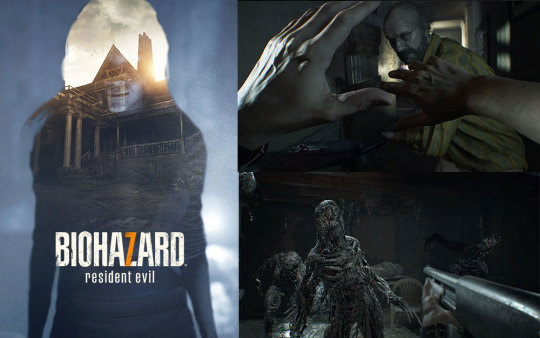
Resident Evil 7: Biohazard, the latest installment in the popular survival horror game series has finally been released. It’s the first numbered title in the series developed natively for current [8th] generation consoles based on Capcom’s in-house “RE Engine”, which also supports VR, incorporating a presentation of fear like nothing that came before. With the entire game being fully compatible with VR, the title is expected to be a spark that will ignite the VR gaming market.
Capcom, the company who developed and published RE7, has established two new local development bases in Osaka with a focus on in-house development. They are aggressively hiring human resources and are expected to have over 2,500 game creators in their employ by the year 2021. Such a company-wide strengthening of its development system is also due to the need for an environment that allows for the creation of more discerning games. We’ve interviewed Hirofumi Nakaoka, lead character artist for RE7, about the human resources and development environment sought by the company.
The Amount of Calories That Can Be Poured Into Each Character Varies
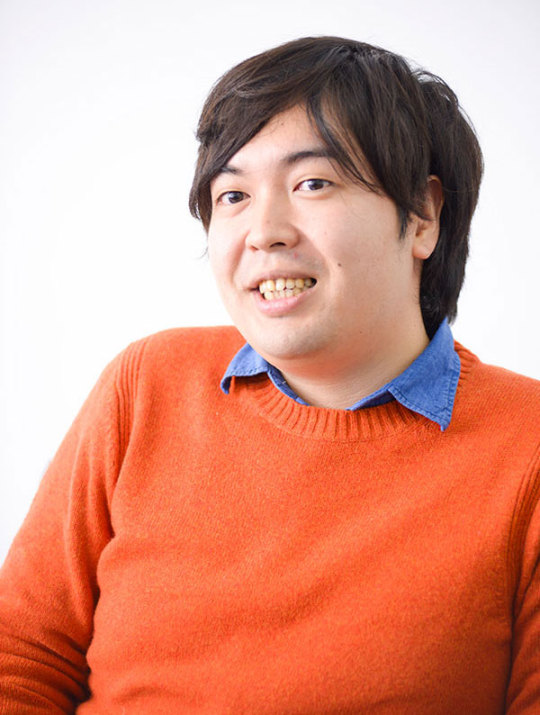
Hirofumi Nakaoka (仲岡 博史) was the lead character artist in RE7. He is a digital artist from Tokyo with 9 years of experience who transferred over to Capcom due to his love for zombies. “I changed jobs during my second year of employment, but I got used to the change pretty quickly.” says Nakaoka. “I don’t really feel any barriers from newcomers or transfers when I look around. I don’t have time to make walls around myself, so people around myself tend to talk with open frankness and we all become pretty close. From a company-wide perspective, only half of our employees are from the Kansai region and the number of foreign creatores are increasing as well.”
What Capcom wants is “a passion for creating games” is the first thing that Nakaoka says in blunt terms.
“As the scale of game development increases, the need to create prettier games that require less rework increases.” says Nakaoka. “However, people cannot control their inner urges, even when they’re receiving instructions from above. There are ideas from all over the place and people who seemingly want to realize them.” As Nakaoka points out, cooperation, character and technology are of course essential, but more importantly it is important for people to have some passion and not be too divided in their jobs.
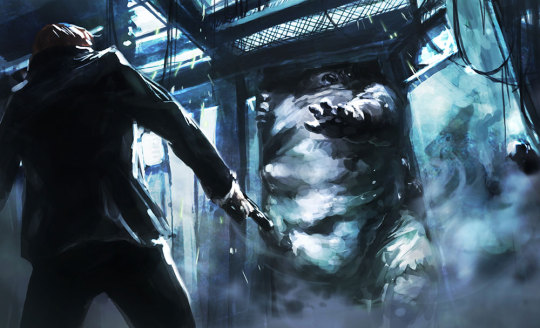
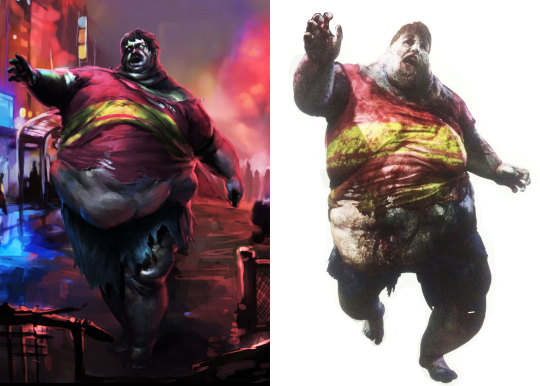
The Whopper made a shocking debut in Resident Evil 6, the previous entry in the series. A morbidly obese zombie also known as the “XL size” within the game. Top: the first piece of concept art depicting a creature that is too large to enter a door. Bottom left: Finalized concept art. Bottom right: Official CGI.
In fact, Nakaoka said that during the development of RE6, he wanted to make a large obese zombie. He was entrusted with the design and modelling of the enemy, which led to the birth of the so-called “Whopper” enemy character.
The Molded, a new creature introduced in RE7, was also a daring new character concept that was created from full-scratch at a time when 3D scanning is becoming more commonplace. “There was no material to use as a reference so we created [the Molded] from scratch. I think that’s what makes our company unique.”
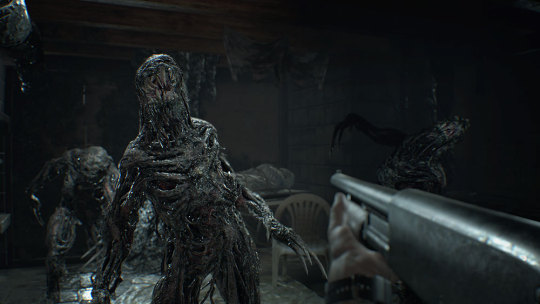
Molded, a new creature that appears in RE7. Creature from complete scratch without any photoscanning. An enemy representative of the game that gave players trouble even in the demo version of the game. “It was a difficult character to create” says Nakaoka. “But as someone familiar with the series’s setting, I think it fits quite well.”
Aiming for video quality that approaches the quality of overseas VFX movies in real-time
Cooperation with partner companies is now required in order to reduce labor cost in the large scale of game development. In response, Capcom has opened two development studios in Osaka City, with plans to hire over 2,500 developers.
“To create a high-quality game, first we need a structure that allows for in-house development. Then we will cooperate on the necessary parts and manage our costs.” such is their policy.
In addition to recent graduates, Capcom is also actively recruiting mid-career veterans, with almost all the job posts available for high-end CGI artists and engineers.
“With the evolution of technology, we’re constantly switching between new tools.” says Mr. Nakaoka. “The RE Team in particular has a work chart that is optimized in a timely matter during development.”
When it comes to modelling, photoscanning is being used more frequently. For example, you can buy a hamburger, break the wrapping paper in a nice way, scan it, fix it and then use it in the game. In turn, if the final data format is preserved, the individuals will have the flexibility to use whatever tools they like.

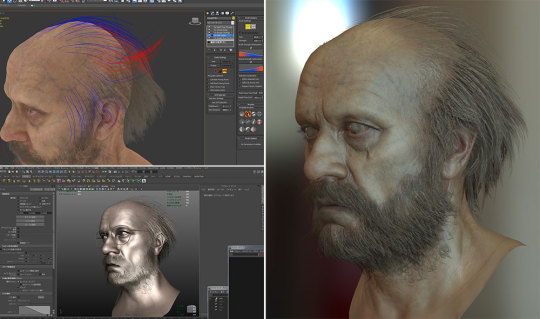
Up to around 12 tools are used to create a single character model.
Upper left: a 3D-scanned model via Photoscan, a program which recreates in high-quality a solid object via photographs taken from various angles.
Upper right: Retopology with Zbrush.
Center left: Hair generated by the Ornatrix plug-in.
Bottom left: Detail fixing with Maya.
Bottom right: Real-time output with the Marmoset toolbag
Job applications from outside the videogame industry are more than welcomed, particularly experience with high-end pre-rendered movies. This is because knowledge in pre-rendered videos from the movie industry is required to create better real-time CGI. On the other hand, even mobile game artists can quickly catch up with the technology and tools if they have a solid foundation. In-house desining meetings and conference briefings are also frequently held and assistance to seminar attendees are also provided.
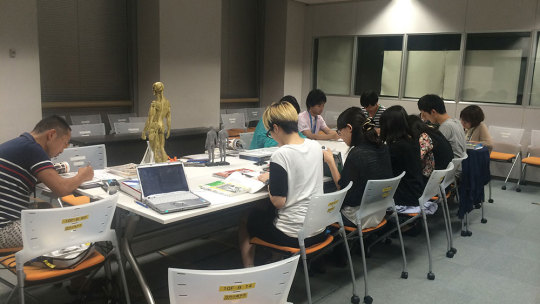
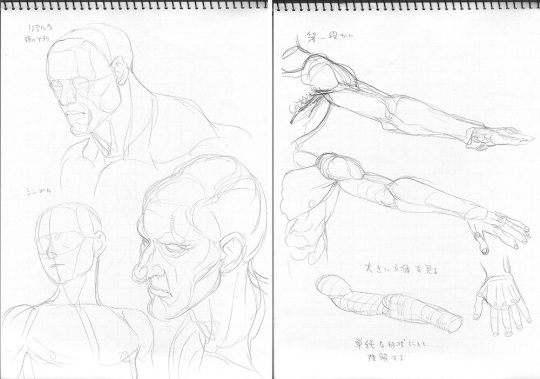
An in-house designing meeting (top), with a guidelines on how to design characters (bottom). Artists recruited from vocational schools tend to have lacking drawing skills compared to their skills with tool acquisitions and game development. For that reason, Capcom often holds lectures teaching their employees on how to draw. In addition, there are other various in-house seminars such as tool studying sessions and conference reports.
One of their features is their emphasis on an employee’s welfare and mental care. A superior takes care of and calls on the assignment of both, projects and positions. On one hand, employees are required to have a regular lifestyle. If an employee wishes to work overtime after 10PM, they must ask permission from their superior. “Despite the flexible workhours, we still value health overall.” says Nakaoka. “Perhaps that’s the one aspect that differs the most from the past.” A passion for creativity and a heart that governs you. Cool games are being created by a group of professional creators with backgrounds in creating not just videogames, but also from the live-action and animation industries.
Text by Kenji Ono
Photos by Yohei Onuma
6 notes
·
View notes